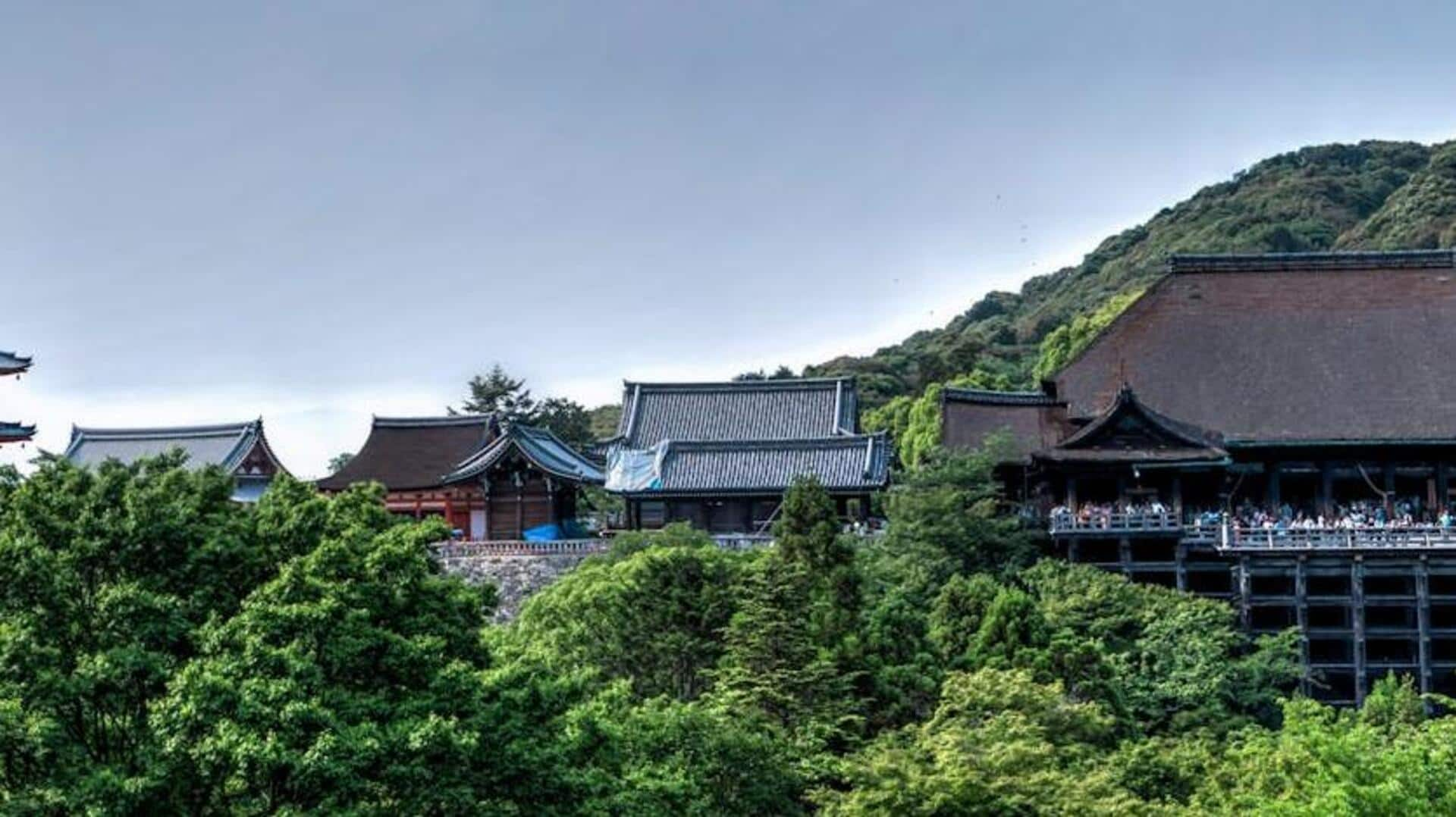
Exploring Kyoto's spiritual heart
What's the story
Kyoto, Japan's ancient capital, is a city where the spiritual and the earthly intertwine. Home to over 2,000 temples and shrines, it offers a unique journey through Japan's rich history and religious heritage. Each temple tells its own story, set against the backdrop of lush mountains or bustling city streets. Here are five revered temples that stand as testaments to Kyoto's spiritual depth.
Kinkaku-ji
The Golden Pavilion shines
Kinkaku-ji, or the Golden Pavilion, is a Zen Buddhist temple and one of Kyoto's iconic sights. Its brilliant gold leaf reflects in the pond before it, symbolizing harmony between heaven and earth. Built as a retirement villa in 1397, it later became a temple through the owner's son's efforts. The surrounding gardens, designed for contemplation, complement its breathtaking beauty.
Rock Garden
Tranquility at Ryoan-ji
Ryoan-ji Temple is renowned for its karesansui (dry landscape) rock garden, considered one of the finest examples of this type of garden in Japan. The simplicity of 15 rocks set amidst raked white gravel encourages Zen meditation and interpretation. Its origins and intended meaning remain a mystery, inviting visitors to reflect on the essence of Zen Buddhism.
Arashiyama Temple
Path through bamboo at Tenryu-ji
Located in the scenic Arashiyama district, Tenryu-ji Temple ranks among Kyoto's five great Zen temples. It boasts a stunning landscape garden, which seamlessly blends with the adjacent bamboo grove paths—a must-walk for any visitor to Kyoto. This UNESCO World Heritage site also offers panoramic views of Mount Arashiyama and serves as an important cultural symbol for Japanese garden design.
Thousand Torii Gates
Fushimi Inari's vermilion gates
Fushimi Inari Taisha is famous for its thousands of vermilion torii gates that create an unending path up Mount Inari. Dedicated to Inari, the Shinto god of rice and prosperity, visitors walk through these gates seeking blessings for wealth or success in business ventures. The hike offers various vantage points over Kyoto and leads to smaller shrines scattered along the way.
Zen sanctuary
Ginkaku-ji: The Silver Pavilion
Ginkaku-ji, known as the Silver Pavilion, mirrors Kinkaku-ji's elegance but was never covered in silver. It boasts moss gardens and sand patterns symbolizing sea clouds. Originally a retirement villa, it transitioned into a cultural hub during the Higashiyama period. It promotes tea ceremony and ikebana, reflecting its role in cultural development while maintaining historical and aesthetic significance.